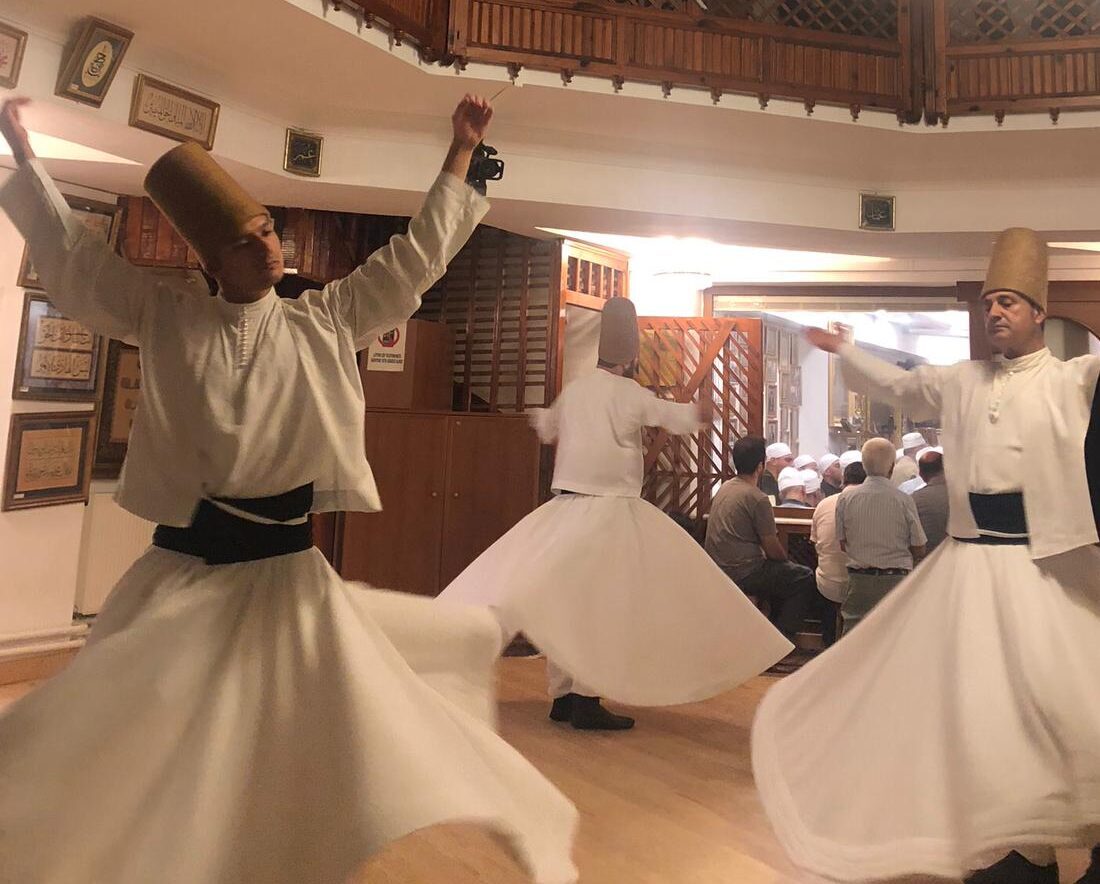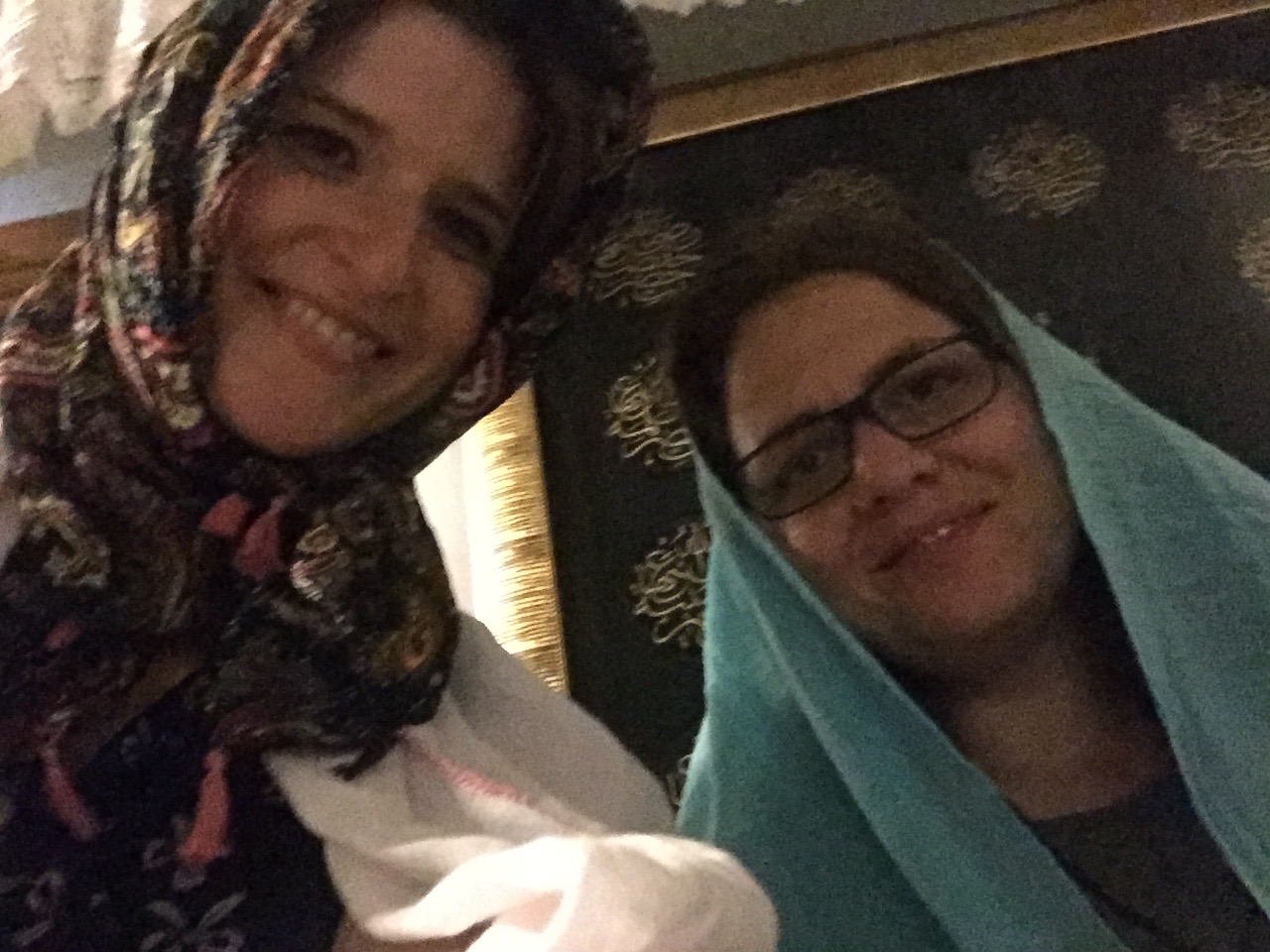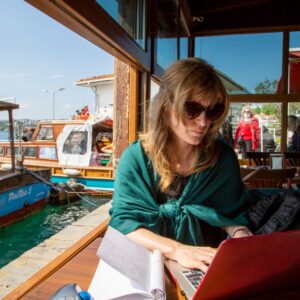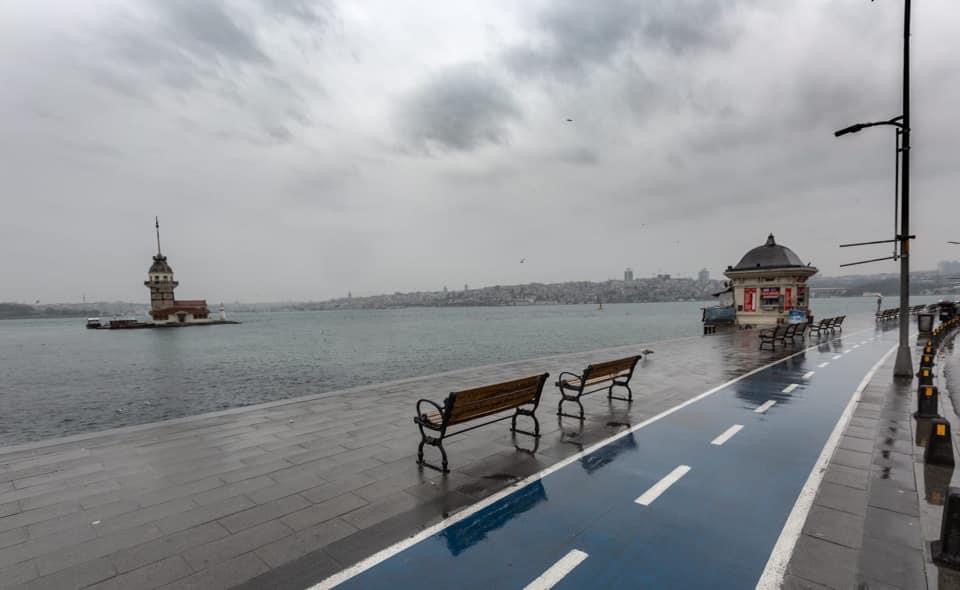
Watching a performance of whirling dervishes – who worship God by twirling into a mesmerizing spiritual frenzy – is a hallmark of any visit to Turkey.
If you go on a tour, such as an evening Bosporus Tour in Istanbul, you might see a performance by these mystical dancers as part of the tour package.
I recently joined an American friend on an evening Bosporus tour where a whirling dervish performer decked out in a black sequined robe delighted us with a dizzying performance set to soothing instrumental music – the kind of music you might listen to while sailing.
But if you would prefer to see a more authentic rendition of whirling dervishes, you might consider visiting a dargah (dergah), a Sufi house of worship.
For those of you who are new to the subject, whirling dervishes are part of Sufism, a mystical style of worship within mainstream Sunni Islam, the origins of which remain in dispute even among Sufi scholars.
The followers of world-famous poet Rumi (Jalaluddin Muhammad Rumi to be exact) founded the Mevlevi order of Sufism shortly after his death, and the Mevlevi order gave the world whirling dervishes, according to tour guide and blogger Burak Sansal.
Rumi, who was born to Persian-speaking parents in present-day Afghanistan and lived most of his life in Konya, Turkey; is wildly popular in the United States and worldwide. In 2014, he was America’s best-selling poet, more than 700 years after his death, according to the BBC.
Dance when you’re broken open. Dance, if you’ve torn the bandage off. Dance in the middle of the fighting. Dance in your blood. Dance when you’re perfectly free.”
Rumi
The rituals established within the Mevlevi order focus on spiritual introspection and closeness to God through poetry, chants, music, and dancing.
And that’s where the whirling dervishes come in.
The best place to see whirling dervishes is in Konya, where Rumi lived and died, but if you can’t make it to Konya, Istanbul has some alternatives that are just as authentic.
My friends, Kubilay and Zeynep, took me to one of these authentic performances on Monday night, June 17, 2019. By authentic, I mean that we went to an actual Sufi worship service, known as a sama (sema), rather than a performance arranged to fascinate tourists. Sama means “listening.”
Every Monday night, Nurettin Efendi Dergahı – an authentic Sufi order in the Fatih district of Istanbul – holds a sama ceremony around 9 p.m. In the summer, the ceremony often begins as late as 11 p.m.
Unlike professional performances for tourists, seeing these whirling dervishes is free of cost.
Zeynep and I were required to cover our hair for the dhikr. Women ordinarily are required to worship up in a latticed loft above the ceremony hall, but Zeynep managed to convince the lady in charge to allow us to sit away from the men in the main ceremony hall, where we could see the action.

As a side note, the mosque has a dresser full of scarves, so if you arrive with an exposed head of hair, the mosque is equipped to cover you. With typical Turkish charm, the ladies searched their cache of scarves for scarf colors that flattered our complexions.
Keep in mind, however, that you should wear relatively modest clothes, i.e. garments that cover your shoulders and knees, out of respect for the worshipers.
Inside Nurettin Efendi Dergahı, the dervishes, dressed entirely in white, began with slow turns and gradually worked themselves into a state of transcendence through whirling and reverberating chants and music performed by worshippers.
As the worshippers chanted and swayed in a swirling motion with their upper bodies, I felt myself involuntarily swaying along with them.
As they prayed – a ceremony called the zikr or dhikr – they held their palms up. As a yoga practitioner, it reminded me of yoga meditation: Upward open palms position the mind and body to be open and receptive. Zikr means “remembrance.”
We couldn’t see the whirling dervishes that well because on that particular night, they were in an adjacent room. We just saw their reflections in the glass. Occasionally, the corner of a whirling white robe whipped out of the door frame into view.
Typically, whirling dervishes perform their worshipful, meditative twirling in the main part of the mosque (the equivalent of a church sanctuary). On Monday night, however, the dervishes were trainees and were not yet ready for their public debut, Kubilay said, after speaking to someone at the dargah. (Update: To see the whirling dervishes performing in the main part of the mosque in September 2019, click on this video.)
Apart from the experience of seeing this moving form of worship, going to a sama can be informative to a visitor to Turkey, because whirling dervishes played a pivotal role in the evolution of Ottoman culture. They influenced the visual arts, but they also shaped music, classical poetry, and calligraphy, Sansal writes.
Understanding Sufiism is learning about a building block of Turkish culture and will deepen your travel experience.



